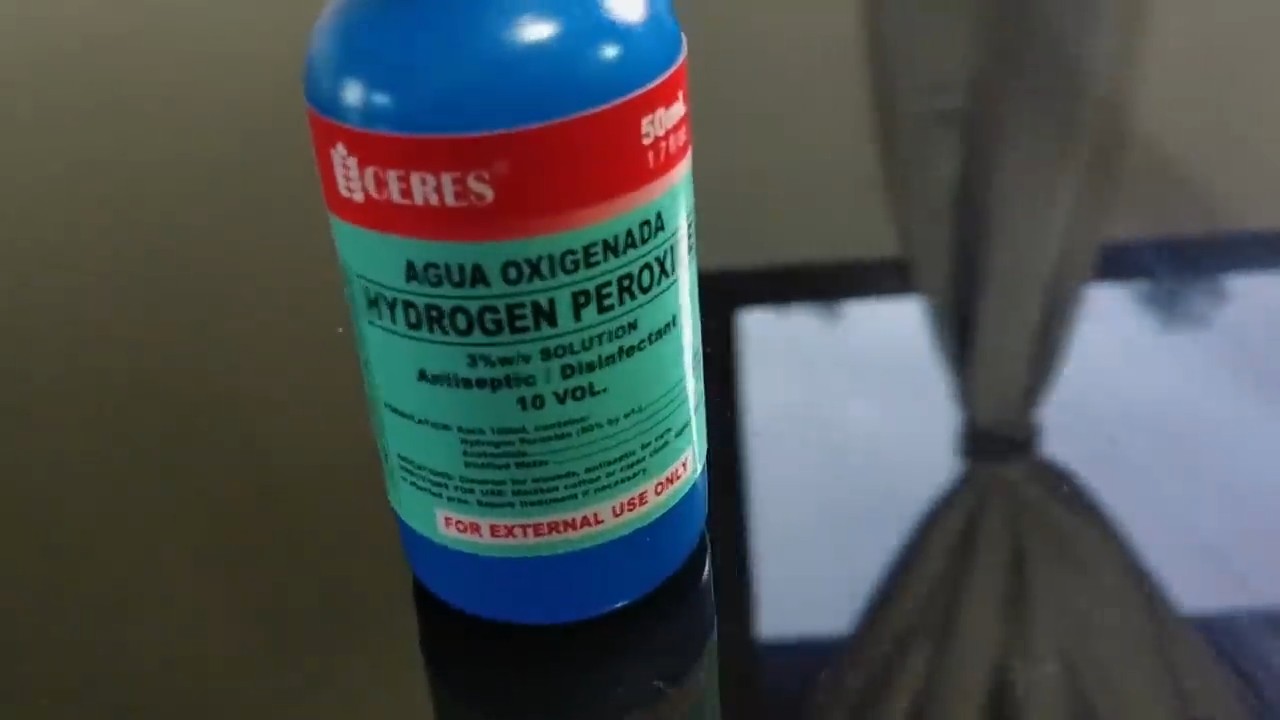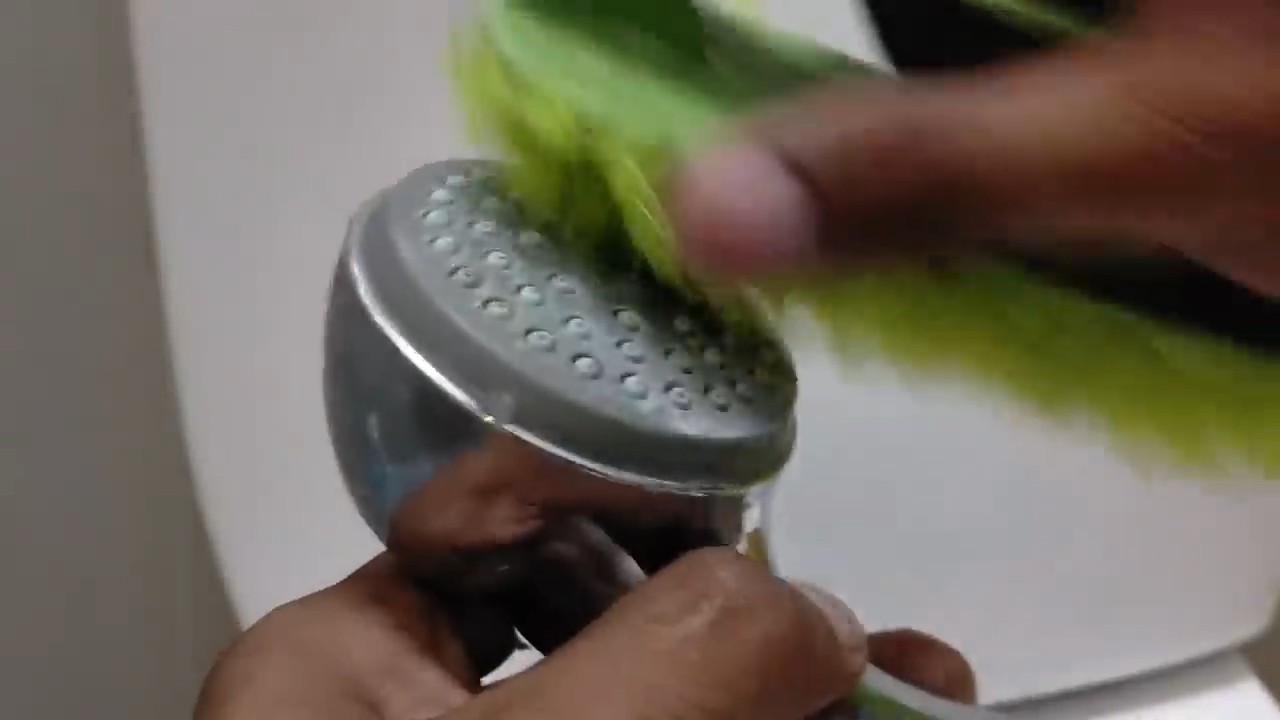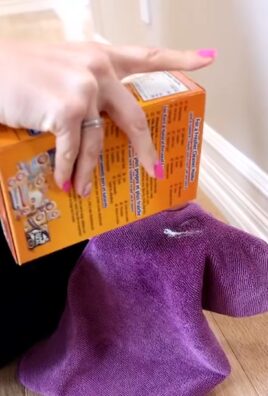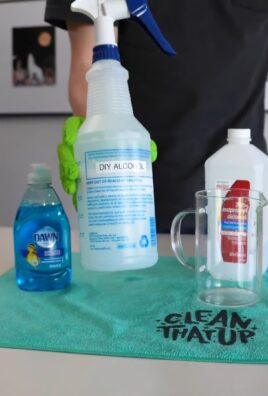Hydrogen Peroxide Everyday Tricks: Unlock the surprising power of this common household staple and transform your home and garden! Have you ever looked at that bottle of hydrogen peroxide under your sink and wondered if it could do more than just disinfect cuts? I certainly have! For generations, hydrogen peroxide has been a go-to for first aid, but its uses extend far beyond the medicine cabinet.
From its humble beginnings as a bleaching agent in the 19th century, hydrogen peroxide has quietly become a versatile tool in countless households. But did you know it can also be your secret weapon for a thriving garden?
In this article, I’m going to share some amazing hydrogen peroxide everyday tricks that will not only simplify your life but also give your plants a healthy boost. We’ll explore how this simple solution can combat common garden pests, promote root growth, and even prevent fungal diseases. Forget expensive fertilizers and harsh chemicals – discover how hydrogen peroxide can be your eco-friendly, budget-friendly gardening ally. Trust me, once you see these results, you’ll wonder how you ever gardened without it!

Unlocking the Power of Hydrogen Peroxide: Everyday Hacks You Need to Know
Hydrogen peroxide (H2O2) – that unassuming brown bottle in your medicine cabinet – is so much more than just a disinfectant for cuts and scrapes. I’ve discovered a treasure trove of uses for this inexpensive and readily available solution, and I’m excited to share them with you! From tackling stubborn stains to boosting your garden’s health, hydrogen peroxide is a DIY superstar. Let’s dive into some of my favorite hacks!
Cleaning and Disinfecting Like a Pro
Hydrogen peroxide is a fantastic alternative to harsh chemical cleaners. Its mild bleaching action and disinfecting properties make it perfect for a variety of household tasks. Remember to always test on an inconspicuous area first, especially on colored fabrics or delicate surfaces.
* The Magic Ratio: I generally use a 3% solution, which is what you typically find at the drugstore. For tougher jobs, you *can* use a higher concentration, but always proceed with caution and wear gloves.
* Safety First: Always store hydrogen peroxide in its original dark bottle, away from light and heat. Never mix it with vinegar or bleach, as this can create dangerous fumes.
1. Whitening Laundry Naturally
Tired of harsh bleach ruining your clothes? Hydrogen peroxide is your gentle yet effective solution.
1. Pre-Soak Stains: For stubborn stains like blood, grass, or wine, pre-soak the affected area in a solution of 1 cup of hydrogen peroxide and 1 gallon of cold water for at least 30 minutes, or even overnight.
2. Add to the Wash: Add 1 cup of hydrogen peroxide to your washing machine along with your regular detergent.
3. Wash as Usual: Wash your clothes as you normally would. I’ve found this works best on white and light-colored fabrics.
2. Disinfecting Cutting Boards and Kitchen Surfaces
Cutting boards are breeding grounds for bacteria. Hydrogen peroxide is a safe and effective way to keep them clean.
1. Wash with Soap and Water: First, wash your cutting board thoroughly with soap and water to remove any food particles.
2. Spray with Hydrogen Peroxide: Spray the cutting board liberally with hydrogen peroxide.
3. Let it Sit: Allow the hydrogen peroxide to sit on the surface for 5-10 minutes to disinfect.
4. Rinse and Dry: Rinse the cutting board thoroughly with water and allow it to air dry. I do this after cutting raw meat or poultry.
3. Cleaning Your Toothbrush
Your toothbrush can harbor a surprising amount of bacteria. Give it a quick and easy cleaning with hydrogen peroxide.
1. Rinse Your Toothbrush: Rinse your toothbrush thoroughly with water after each use.
2. Soak in Hydrogen Peroxide: Once a week, soak your toothbrush head in a small cup of hydrogen peroxide for a few minutes.
3. Rinse Again: Rinse your toothbrush thoroughly with water before using it.
4. Freshening Up Your Dishwasher
Over time, dishwashers can develop unpleasant odors. Hydrogen peroxide can help eliminate those smells and disinfect the interior.
1. Empty the Dishwasher: Make sure your dishwasher is empty.
2. Pour in Hydrogen Peroxide: Pour 1 cup of hydrogen peroxide into the bottom of the dishwasher.
3. Run a Cycle: Run a normal wash cycle with hot water.
5. Cleaning Mirrors and Glass
Forget expensive glass cleaners! Hydrogen peroxide leaves mirrors and windows streak-free and sparkling.
1. Mix a Solution: Mix equal parts hydrogen peroxide and water in a spray bottle.
2. Spray the Surface: Spray the solution onto the mirror or glass surface.
3. Wipe Clean: Wipe clean with a microfiber cloth. I find this works better than paper towels, which can leave lint.
Beauty and Personal Care Boosts
Hydrogen peroxide can also be used for a variety of beauty and personal care purposes. However, it’s crucial to use it with caution and dilute it properly.
* Important Note: Always dilute hydrogen peroxide before using it on your skin or hair. Start with a very diluted solution and test on a small area first to check for any adverse reactions.
6. Whitening Your Nails
If your nails are stained from dark nail polish, hydrogen peroxide can help brighten them.
1. Mix a Solution: Mix 1 tablespoon of hydrogen peroxide with 1/2 cup of water.
2. Soak Your Nails: Soak your nails in the solution for 2-3 minutes.
3. Rinse and Moisturize: Rinse your hands thoroughly with water and apply a moisturizer. I wouldn’t do this more than once a week.
7. Lightening Hair (Use with Extreme Caution!)
Hydrogen peroxide can lighten hair, but it’s important to proceed with extreme caution. It can be damaging if used incorrectly. I recommend consulting a professional stylist for best results.
1. Dilute the Hydrogen Peroxide: Mix equal parts hydrogen peroxide and water in a spray bottle.
2. Test on a Strand: Spray a small strand of hair with the solution and wait 20-30 minutes to see how it reacts.
3. Apply to Hair: If you’re happy with the test strand, spray the solution onto the hair you want to lighten.
4. Wait and Rinse: Wait 20-30 minutes, checking the color frequently. Rinse your hair thoroughly with water and apply a deep conditioner. Remember, this can be damaging, so proceed with caution!
8. Earwax Removal (Consult a Doctor First!)
Impacted earwax can be uncomfortable. Hydrogen peroxide can help soften and loosen the wax. However, it’s essential to consult a doctor before attempting this, especially if you have any ear problems or have had ear surgery.
1. Dilute the Hydrogen Peroxide: Mix equal parts hydrogen peroxide and water.
2. Tilt Your Head: Tilt your head to the side so that the ear you want to treat is facing up.
3. Apply the Solution: Using a dropper, carefully apply a few drops of the solution into your ear.
4. Wait and Drain: Wait 5-10 minutes, then tilt your head to the other side to allow the solution to drain out.
5. Rinse with Warm Water: Rinse your ear with warm water.
Gardening Wonders with Hydrogen Peroxide
Hydrogen peroxide isn’t just for cleaning and beauty; it can also work wonders in your garden! It helps oxygenate the soil, fight fungal infections, and even promote seed germination.
* Dilution is Key: For gardening purposes, it’s crucial to dilute the hydrogen peroxide properly to avoid damaging your plants.
9. Boosting Seed Germination
Soaking seeds in a diluted hydrogen peroxide solution can help soften the seed coat and promote faster germination.
1. Mix a Solution: Mix 1 tablespoon of hydrogen peroxide with 1 cup of water.
2. Soak the Seeds: Soak the seeds in the solution for 30 minutes.
3. Plant as Usual: Plant the seeds as you normally would.
10. Fighting Fungal Infections
Hydrogen peroxide can help combat fungal infections like powdery mildew and root rot.
1. Mix a Solution: Mix 1 tablespoon of hydrogen peroxide with 1 quart of water.
2. Spray the Plants: Spray the affected plants with the solution, making sure to cover all surfaces.
3. Repeat as Needed: Repeat the treatment every few days until the infection is under control.
11. Oxygenating the Soil
Hydrogen peroxide can help oxygenate the soil, which is especially beneficial for plants growing in compacted or poorly drained soil.
1. Mix a Solution: Mix 1 teaspoon of hydrogen peroxide with 1 gallon of water.
2. Water the Plants: Water your plants with the solution as you normally would.
12. Cleaning Plant Pots
Before repotting plants, I always clean the pots with hydrogen peroxide to kill any lingering bacteria or fungi.
1. Wash the Pots: Wash the pots with soap and water to remove any dirt or debris.
2. Spray with Hydrogen Peroxide: Spray the inside and outside of the pots with hydrogen peroxide.
3. Let it Sit: Allow the hydrogen peroxide to sit on the surface for 5-10 minutes.
4. Rinse and Dry: Rinse the pots thoroughly with water and allow them to air dry.
Other Clever Uses
The versatility of hydrogen peroxide doesn’t stop there! Here are a few more creative ways to use it around your home.
13. Removing Mildew from Shower Curtains
Mildew can be a persistent problem in bathrooms. Hydrogen peroxide can help remove it from shower curtains.
1. Spray the Curtain: Spray the mildewed areas of the shower curtain

Conclusion
So, there you have it! Unlocking the power of hydrogen peroxide for everyday tricks is not just about saving money; it’s about discovering a versatile, eco-friendly solution that can simplify your life in countless ways. From banishing stubborn stains to revitalizing your garden, the possibilities are truly impressive. We’ve explored a range of applications, highlighting the ease and effectiveness of this readily available household staple.
But why is this DIY approach a must-try? Because it empowers you to take control of your cleaning and maintenance routines. You’re not relying on harsh chemicals or expensive specialty products. Instead, you’re harnessing the natural oxidizing properties of hydrogen peroxide to achieve remarkable results. Think of the satisfaction of removing a seemingly impossible stain with a simple solution you mixed yourself. Think of the peace of mind knowing you’re using a safer alternative for your family and the environment.
The beauty of these hydrogen peroxide everyday tricks lies in their adaptability. Feel free to experiment and tailor them to your specific needs. For instance, if you’re dealing with particularly tough mildew in your bathroom, try increasing the concentration of hydrogen peroxide in your cleaning solution. Or, if you’re using it as a laundry booster, consider adding a few drops of your favorite essential oil for a fresh, natural scent. For whitening clothes, consider adding a tablespoon of baking soda to the hydrogen peroxide solution for an extra boost. Remember to always test in an inconspicuous area first, especially on delicate fabrics or surfaces.
Don’t be afraid to get creative! Perhaps you’ll discover a new and innovative use for hydrogen peroxide that we haven’t even thought of. The key is to start experimenting and see what works best for you.
We wholeheartedly encourage you to try these hydrogen peroxide everyday tricks. You’ll be amazed at the difference they can make. Not only will you save money and reduce your reliance on harsh chemicals, but you’ll also gain a newfound appreciation for the power of simple, natural solutions.
But the journey doesn’t end here. We want to hear about your experiences! Did you try one of these tricks and achieve amazing results? Did you discover a new and innovative use for hydrogen peroxide? Share your stories, tips, and variations in the comments below. Let’s build a community of DIY enthusiasts who are passionate about harnessing the power of hydrogen peroxide for a cleaner, healthier, and more sustainable lifestyle. Your insights could inspire others to embrace this versatile solution and unlock its full potential. So, go ahead, give it a try, and let us know what you think! We can’t wait to hear from you.
Frequently Asked Questions (FAQ)
Is hydrogen peroxide safe to use?
Yes, hydrogen peroxide is generally safe to use when handled properly. The 3% solution commonly found in drugstores is considered safe for most household applications. However, it’s crucial to avoid ingesting it and to prevent it from coming into contact with your eyes. Always wear gloves when handling hydrogen peroxide, especially in concentrated forms, to prevent skin irritation. It’s also important to store hydrogen peroxide in a dark, cool place, away from children and pets. Never mix hydrogen peroxide with other cleaning agents, especially bleach, as this can create dangerous fumes. When using it on fabrics or surfaces, always test in an inconspicuous area first to ensure it doesn’t cause discoloration or damage.
What is the difference between different concentrations of hydrogen peroxide?
The concentration of hydrogen peroxide refers to the percentage of hydrogen peroxide in a solution with water. The most common concentration available in drugstores is 3%, which is suitable for most household cleaning and disinfecting purposes. Higher concentrations, such as 35% (food grade) or even higher industrial grades, are available but require extreme caution when handling. Higher concentrations can cause severe skin burns and eye damage. They should only be used by trained professionals and with appropriate safety equipment. For the DIY tricks mentioned in this article, the 3% solution is generally recommended unless otherwise specified. Using a higher concentration without proper knowledge and precautions can be dangerous.
Can I use hydrogen peroxide on all types of fabrics?
While hydrogen peroxide is generally safe for most white and light-colored fabrics, it’s essential to exercise caution when using it on colored fabrics. Always test in an inconspicuous area first to ensure it doesn’t cause fading or discoloration. Dark or delicate fabrics may be more susceptible to damage. For these types of fabrics, consider diluting the hydrogen peroxide solution further or using a gentler stain remover. When in doubt, it’s always best to consult the care label on the garment or take it to a professional cleaner.
How should I store hydrogen peroxide?
Hydrogen peroxide should be stored in a dark, cool, and dry place, away from direct sunlight and heat. Light and heat can cause it to decompose, reducing its effectiveness. It’s also important to keep it tightly sealed in its original container to prevent evaporation and contamination. Store it out of reach of children and pets, as ingestion can be harmful. Avoid storing it near flammable materials or other cleaning agents, especially bleach. A cool, dark cabinet or pantry is an ideal storage location.
Can I use hydrogen peroxide to clean my teeth?
Hydrogen peroxide can be used as a mouthwash to help whiten teeth and kill bacteria, but it should be used with caution and in moderation. Always dilute it with water (typically a 1:1 ratio) and swish it around in your mouth for no more than 30 seconds. Avoid swallowing it. Prolonged or excessive use of hydrogen peroxide as a mouthwash can irritate the gums and damage tooth enamel. It’s best to consult with your dentist before using hydrogen peroxide for oral hygiene to ensure it’s safe and appropriate for your individual needs. There are also specially formulated mouthwashes containing hydrogen peroxide that are designed for safe and effective oral care.
Is hydrogen peroxide environmentally friendly?
Yes, hydrogen peroxide is considered an environmentally friendly cleaning agent. It decomposes into water and oxygen, leaving no harmful residues behind. This makes it a safer alternative to many harsh chemical cleaners that can pollute waterways and harm aquatic life. By using hydrogen peroxide for cleaning and disinfecting, you can reduce your environmental impact and contribute to a more sustainable lifestyle. However, it’s still important to use it responsibly and avoid excessive use or disposal.
What are some other uses for hydrogen peroxide that weren’t mentioned in the article?
Beyond the uses mentioned in the article, hydrogen peroxide has a wide range of other applications. It can be used to disinfect cutting boards, clean humidifiers, remove mildew from shower curtains, sanitize sponges, and even treat minor cuts and scrapes. Gardeners often use it to aerate soil and prevent root rot. It can also be used to clean and disinfect pet toys and bedding. The versatility of hydrogen peroxide makes it a valuable addition to any household. Remember to always research and follow safety guidelines before using it for any new application.




Leave a Comment